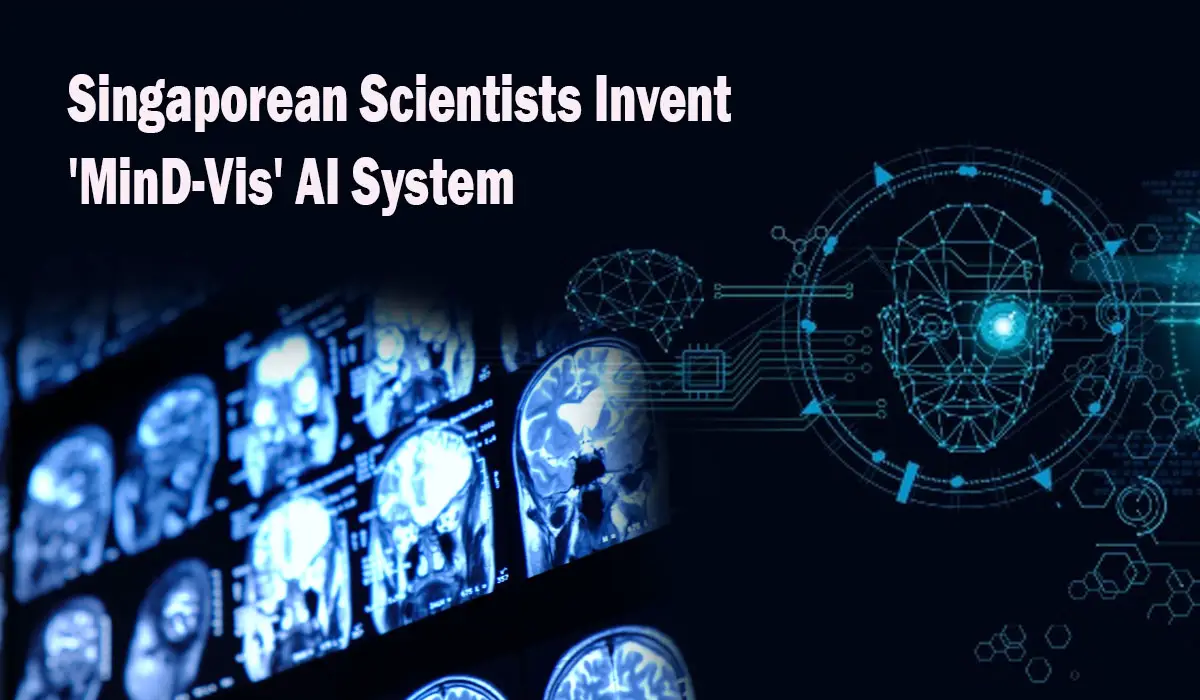In the realm of cutting-edge technology, the unveiling of Singaporean Researchers’ groundbreaking creation, the ‘MinD-Vis’ AI tool, has sent ripples through the scientific and technological community. This revolutionary innovation holds the promise of unlocking the enigmatic realm of human thoughts, offering an unprecedented peek into the intricacies of the human mind. With the ability to associate brain scans with images and craft individualized AI models for each participant, the MinD-Vis AI tool has the potential to redefine our understanding of cognition and perception.
Decoding the Intricacies of Mind-Reading: Unveiling MinD-Vis
At its core, MinD-Vis stands as a testament to the prowess of artificial intelligence intertwined with neuroscientific exploration. The breakthrough occurs when participants engage with the AI tool within the confines of an MRI. The interaction is catalyzed as participants are exposed to various images, prompting their brains to react in real-time. The AI, equipped with intricate algorithms, diligently interprets the brain wave patterns generated during this exposure, ultimately constructing a visual representation of the image the participant is perceiving.
The Fusion of Neural Patterns and AI: How It Functions
The mechanics underpinning MinD-Vis are undeniably fascinating. As participants interact with the AI, neural patterns within their brain scans are meticulously correlated with the images presented. This fusion of neural data and AI technology yields a bespoke AI model for every individual, effectively personalizing the mind-reading experience. Upon exposure to the MRI environment and subsequent images, the AI algorithm springs into action, translating neural signals into visual depictions, effectively “reading” the mind.
The Quest for Mass Mind Reading: Possibilities and Implications
While the capabilities of MinD-Vis are undoubtedly awe-inspiring, a pivotal question arises – can this cutting-edge AI tool extend its mind-reading prowess to the masses? The answer to this inquiry has profound implications for the realms of neuroscience, psychology, and even communication technology. As of now, MinD-Vis’ efficacy is primarily demonstrated in controlled experimental settings, where participants are exposed to specific stimuli in a controlled environment.
Read Also: Mastering ChatGPT: 22 Expert Tips for Crafting Perfect Prompts
Exploring the Boundaries: Challenges and Horizons
The journey towards mass mind reading is not without its challenges. The intricacies of the human brain, the diversity of cognitive responses, and the potential for external factors to influence neural patterns all pose hurdles that must be overcome. Additionally, ethical considerations loom large – the notion of invading the privacy of one’s thoughts raises important ethical questions that society must address.
Unleashing the Potential: Applications Beyond Mind Reading
Beyond its captivating mind-reading capabilities, MinD-Vis presents a plethora of applications that extend beyond the confines of the laboratory. The integration of AI and neuroscientific insights could pave the way for innovative therapies for individuals with communication impairments. Moreover, the technology could find application in education, enabling educators to gain deeper insights into the cognitive processes of their students, thereby fostering more effective teaching methods.
Journeying into the Future: Exploring the Uncharted Territories
The unveiling of the MinD-Vis AI tool marks a significant stride in the journey of human technological advancement. However, it also serves as a reminder of the uncharted territories that lie ahead. The fusion of AI and neuroscience holds boundless potential, opening doors to understanding the depths of human cognition, perception, and communication.
Read Also: Defending Against OpenAI’s GPTBot Web Crawler
In conclusion, the MinD-Vis AI tool developed by Singaporean Researchers stands as a testament to the marriage of advanced technology and the intricate nuances of the human mind. Its ability to associate brain scans with images, create personalized AI models, and generate visual representations of perceived images heralds a new era in neuroscience and cognitive exploration. As this revolutionary technology continues to make waves in the scientific community, the possibilities it offers are as vast as the horizons of the human mind itself.

